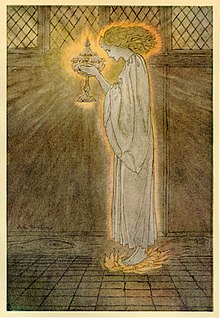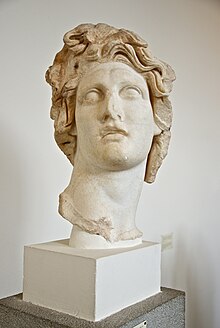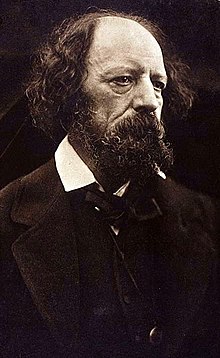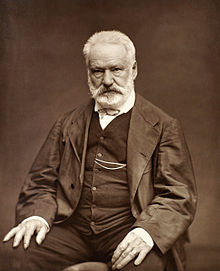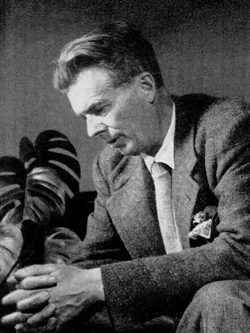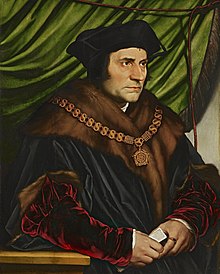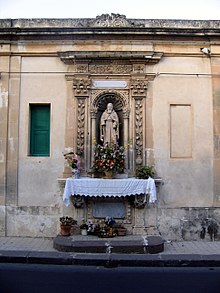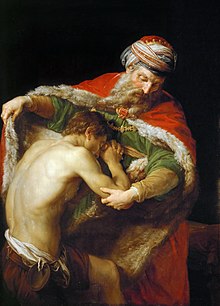Week 17 Lord of the Flies byWilliam Golding
1.The Wedding at Cana

The Wedding at Cana (1563, also The Wedding Feast at Cana), by Paolo Veronese, is a representational painting that depicts the Bible story of the Marriage at Cana, a wedding banquet at which Jesus converts water to wine (John 2:1–11). The work is a large-format (6.77 m × 9.94 m) oil painting executed in the Mannerist style of the High Renaissance (1490–1527); as such, The Wedding Feast at Cana is the most expansive canvas (67.29 m2) in the paintings collection of the Musée du Louvre.
As a Mannerist painting, The Wedding at Cana comprehends the stylistic influences of the ideals of compositional harmony of artists such as Leonardo, Raphael, and Michelangelo, especially his early paintings. Whereas the art of the High Renaissance emphasized ideal proportion, balance, and beauty, Mannerism exaggerated those ideals of figure, light, and colour, with asymmetric and unnaturally elegant compositions.
In executing the painting in the Mannerist style of compositional tension and instability, Veronese used technical artifice, social intellect, and cultural sophistication for The Wedding at Cana to tell a Biblical story to the viewer.
 Paolo Caliari, known as Paolo Veronese (1528–1588), was an Italian Renaissance painter, based in Venice, known for large-format history paintings of religion and mythology, such as The Wedding at Cana (1563) and The Feast in the House of Levi (1573). Included with Titian, a generation older, and Tintoretto, a decade senior, Veronese is one of the “great trio that dominated Venetian painting of the cinquecento” and the Late Renaissance in the 16th century.Known as a supreme colorist, and after an early period with Mannerism, Paolo Veronese developed a naturalist style of painting, influenced by Titian.
Paolo Caliari, known as Paolo Veronese (1528–1588), was an Italian Renaissance painter, based in Venice, known for large-format history paintings of religion and mythology, such as The Wedding at Cana (1563) and The Feast in the House of Levi (1573). Included with Titian, a generation older, and Tintoretto, a decade senior, Veronese is one of the “great trio that dominated Venetian painting of the cinquecento” and the Late Renaissance in the 16th century.Known as a supreme colorist, and after an early period with Mannerism, Paolo Veronese developed a naturalist style of painting, influenced by Titian.His most famous works are elaborate narrative cycles, executed in a dramatic and colorful style, full of majestic architectural settings and glittering pageantry. His large paintings of biblical feasts, crowded with figures, painted for the refectories of monasteries in Venice and Verona are especially famous, and he was also the leading Venetian painter of ceilings. Most of these works remain in situ, or at least in Venice, and his representation in most museums is mainly composed of smaller works such as portraits that do not always show him at his best or most typical.
He has always been appreciated for "the chromatic brilliance of his palette, the splendor and sensibility of his brushwork, the aristocratic elegance of his figures, and the magnificence of his spectacle", but his work has been felt "not to permit expression of the profound, the human, or the sublime", and of the "great trio" he has often been the least appreciated by modern criticism.Nonetheless, "many of the greatest artists ... may be counted among his admirers, including Rubens, Watteau, Tiepolo, Delacroix and Renoir".
2. A hunter-gatherer society is a human living in a society in which most or all food is obtained by foraging (collecting wild plants and pursuing wild animals), in contrast to agricultural societies, which rely mainly on domesticated species.
Hunting and gathering was humanity's first and most successful adaptation, occupying at least 90 percent of human history. Following the invention of agriculture, hunter-gatherers who did not change have been displaced or conquered by farming or pastoralist groups in most parts of the world.
Archaeological evidence
In the 1970s, Lewis Binford suggested that early humans were obtaining food via scavenging, not hunting. Early humans in the Lower Paleolithic lived in forests and woodlands, which allowed them to collect seafood, eggs, nuts, and fruits besides scavenging. Rather than killing large animals for meat, according to this view, they used carcasses of such animals that had either been killed by predators or that had died of natural causes.Archaeological and genetic data suggest that the source populations of Paleolithic hunter-gatherers survived in sparsely wooded areas and dispersed through areas of high primary productivity while avoiding dense forest cover.
3.The first murder
Cain and Abel were sons of Adam and Eve.Cain, the firstborn, tilled the soil, and his brother Abel was a shepherd. The brothers made sacrifices to God, each of his own produce, but God favored Abel's sacrifice instead of that of Cain. Cain murdered Abel. God punished Cain to a life of wandering, but set a mark on him so that no man would kill him. Cain then dwelt in the land of Nod , where he built a city and fathered the line of descendants beginning with Enoch. The narrative never explicitly states Cain's motive (though it does describe him as being wrathful, and his motive is traditionally assumed to be envy), nor God's reason for rejecting Cain's sacrifice, nor details on the identity of Cain's wife. Some traditional interpretations consider Cain to be the originator of evil, violence, or greed.
4.Dionysus
 Dionysus is the god of the grape harvest, wine making and wine, of ritual madness, fertility, theatre and religious ecstasy in ancient Greek religion and myth. Wine played an important role in Greek culture, and the cult of Dionysus was the main religious focus for its unrestrained consumption. He may have been worshipped as early as c. 1500–1100 BC by Mycenean Greeks;traces of Dionysian-type cult have also been found in ancient Minoan Crete. His origins are uncertain, and his cults took many forms; some are described by ancient sources as Thracian, others as Greek. In some cults, he arrives from the east, as an Asiatic foreigner; in others, from Ethiopia in the South. He is a god of epiphany, "the god that comes", and his "foreignness" as an arriving outsider-god may be inherent and essential to his cults. He is a major, popular figure of Greek mythology and religion, becoming increasingly important over time, and included in some lists of the twelve Olympians, as the last of their number, and the only god born from a mortal mother.His festivals were the driving force behind the development of Greek theatre.
Dionysus is the god of the grape harvest, wine making and wine, of ritual madness, fertility, theatre and religious ecstasy in ancient Greek religion and myth. Wine played an important role in Greek culture, and the cult of Dionysus was the main religious focus for its unrestrained consumption. He may have been worshipped as early as c. 1500–1100 BC by Mycenean Greeks;traces of Dionysian-type cult have also been found in ancient Minoan Crete. His origins are uncertain, and his cults took many forms; some are described by ancient sources as Thracian, others as Greek. In some cults, he arrives from the east, as an Asiatic foreigner; in others, from Ethiopia in the South. He is a god of epiphany, "the god that comes", and his "foreignness" as an arriving outsider-god may be inherent and essential to his cults. He is a major, popular figure of Greek mythology and religion, becoming increasingly important over time, and included in some lists of the twelve Olympians, as the last of their number, and the only god born from a mortal mother.His festivals were the driving force behind the development of Greek theatre.The earliest cult images of Dionysus show a mature male, bearded and robed. He holds a fennel staff, tipped with a pine-cone and known as a thyrsus. Later images show him as a beardless, sensuous, naked or half-naked androgynous youth: the literature describes him as womanly or "man-womanish".In its fully developed form, his central cult imagery shows his triumphant, disorderly arrival or return, as if from some place beyond the borders of the known and civilized. His procession is made up of wild female followers and bearded satyrs with erect penises; some are armed with the thyrsus, some dance or play music. The god himself is drawn in a chariot, usually by exotic beasts such as lions or tigers, and is sometimes attended by a bearded, drunken Silenus. This procession is presumed to be the cult model for the followers of his Dionysian Mysteries. Dionysus is represented by city religions as the protector of those who do not belong to conventional society and he thus symbolizes the chaotic, dangerous and unexpected, everything which escapes human reason and which can only be attributed to the unforeseeable action of the gods.
He is also known as Bacchus , the name adopted by the Romans and the frenzy he induces is bakkheia. His thyrsus, sometimes wound with ivy and dripping with honey, is both a beneficent wand and a weapon used to destroy those who oppose his cult and the freedoms he represents. As Eleutherios ("the liberator"), his wine, music and ecstatic dance free his followers from self-conscious fear and care, and subvert the oppressive restraints of the powerful. Those who partake of his mysteries are possessed and empowered by the god himself.
5. The Pietà is a subject in Christian art depicting the Virgin Mary cradling the dead body of Jesus, most often found in sculpture. As such, it is a particular form of the Lamentation of Christ, a scene from the Passion of Christ found in cycles of the Life of Christ. When Christ and the Virgin are surrounded by other figures from the New Testament, the subject is strictly called a Lamentation in English, although Pietà is often used for this as well, and is the normal term in Italian.
Context and Development
 Pietà is one of the three common artistic representations of a sorrowful Virgin Mary, the other two being Mater Dolorosa (Mother of Sorrows) and Stabat Mater (here stands the mother). The other two representations are most commonly found in paintings, rather than sculpture, although combined forms exist.
Pietà is one of the three common artistic representations of a sorrowful Virgin Mary, the other two being Mater Dolorosa (Mother of Sorrows) and Stabat Mater (here stands the mother). The other two representations are most commonly found in paintings, rather than sculpture, although combined forms exist.The Pietà developed in Germany (where it is called the "Vesperbild") about 1300, reached Italy about 1400, and was especially popular in Central European Andachtsbilder. Many German and Polish 15th-century examples in wood greatly emphasise Christ's wounds. The Deposition of Christ and the Lamentation or Pietà form the 13th of the Stations of the Cross, as well as one of the Seven Sorrows of the Virgin.
Although the Pietà most often shows the Virgin Mary holding Jesus, there are other compositions, including those where God the Father participates in holding Jesus. In Spain the Virgin often holds up one or both hands, sometimes with Christ's body slumped to the floor.
Michelangelo
A famous example by Michelangelo is located in St. Peter's Basilica in the Vatican City. The body of Christ is different from most earlier pietà statues, which were usually smaller and in wood. The Virgin is also unusually youthful, and in repose, rather than the older, sorrowing Mary of most pietàs. She is shown as youthful for two reasons; God is the source of all beauty and she is one of the closest to God, also the exterior is thought as the revelation of the interior (the virgin is morally beautiful). The Pietà with the Virgin Mary is also unique among Michelangelo's sculptures, because it was the only one he ever signed, upon hearing that visitors thought it had been sculpted by Cristoforo Solari, a competitor. Michelangelo's signature is carved into the sash the Virgin wears on her breast.
 Michelangelo di Lodovico Buonarroti Simoni(6 March 1475 – 18 February 1564) was a Florentine sculptor, painter, architect, and poet of the High Renaissance who exerted an unparalleled influence on the development of Western art.Considered to be the greatest living artist during his lifetime, he has since been described as one of the greatest artists of all time. Despite making few forays beyond the arts, his versatility in the disciplines he took up was of such a high order that he is often considered a contender for the title of the archetypal Renaissance man, along with his rival and fellow Florentine Medici client, Leonardo da Vinci.
Michelangelo di Lodovico Buonarroti Simoni(6 March 1475 – 18 February 1564) was a Florentine sculptor, painter, architect, and poet of the High Renaissance who exerted an unparalleled influence on the development of Western art.Considered to be the greatest living artist during his lifetime, he has since been described as one of the greatest artists of all time. Despite making few forays beyond the arts, his versatility in the disciplines he took up was of such a high order that he is often considered a contender for the title of the archetypal Renaissance man, along with his rival and fellow Florentine Medici client, Leonardo da Vinci.A number of Michelangelo's works of painting, sculpture, and architecture rank among the most famous in existence. His output in every field of interest was prodigious; given the sheer volume of surviving correspondence, sketches, and reminiscences taken into account, he is the best-documented artist of the 16th century.
He sculpted two of his best-known works, the Pietà and David, before the age of thirty. Despite holding a low opinion of painting, Michelangelo also created two of the most influential frescoes in the history of Western art: the scenes from Genesis on the ceiling of the Sistine Chapel in Rome, and The Last Judgment on its altar wall. As an architect, Michelangelo pioneered the Mannerist style at the Laurentian Library. At the age of 74, he succeeded Antonio da Sangallo the Younger as the architect of St. Peter's Basilica. Michelangelo transformed the plan so that the western end was finished to his design, as was the dome, with some modification, after his death.
Pietà of Villeneuve-lès-Avignon is an oil painting of the mid-15th century that is considered one of the outstanding works of art of the late Middle Ages. Following its appearance at an exhibition in 1904 its authorship was disputed, though it has since been accepted as the work of Enguerrand Quarton. It is now in the Musée du Louvre.
 The Pietà, where the dead Christ is supported by his grieving mother, is a common theme of late-medieval religious art, but this is one of the most striking depictions, "perhaps the greatest masterpiece produced in France in the 15th century" (Edward Lucie-Smith). It is distinctive from previous depictions of the subject—which were often characterized by overt displays of grief and trauma—by virtue of its restraint. The composition is stable, with the Virgin's hands together in prayer, rather than clutching the body of Christ. The curved back form of Christ's body is highly original, and the stark, motionless dignity of the other figures is very different from Italian or Netherlandish depictions. The style of the painting is unique for its time: the grouping of the figures appears somewhat primitive, yet the conception evidences both great breadth and delicacy, the latter quality especially evident in the specificity of the portraits and the elegant gesture of St. John's hands at Christ's head.
The Pietà, where the dead Christ is supported by his grieving mother, is a common theme of late-medieval religious art, but this is one of the most striking depictions, "perhaps the greatest masterpiece produced in France in the 15th century" (Edward Lucie-Smith). It is distinctive from previous depictions of the subject—which were often characterized by overt displays of grief and trauma—by virtue of its restraint. The composition is stable, with the Virgin's hands together in prayer, rather than clutching the body of Christ. The curved back form of Christ's body is highly original, and the stark, motionless dignity of the other figures is very different from Italian or Netherlandish depictions. The style of the painting is unique for its time: the grouping of the figures appears somewhat primitive, yet the conception evidences both great breadth and delicacy, the latter quality especially evident in the specificity of the portraits and the elegant gesture of St. John's hands at Christ's head.The bare background landscape falls away to a horizon broken by the buildings of Jerusalem, but instead of a sky there is plain gold leaf with stamped and incised haloes, borders and inscriptions. The clerical donor, portrayed with Netherlandish realism, kneels to the left. The painting came from Villeneuve-lès-Avignon, just across the Rhône from Avignon, and is sometimes known as the "Villeneuve Pietà". It can also be suggested that the buildings depicted on the left background are an imaginary representation of Istanbul and the church of Hagia Sophia. The city had fallen to the Ottomans in 1453, a few years before the estimated creation of the painting and the main subject (Pieta) can be considered as a lament to the fall of the eastern part of Christendom.
Enguerrand Quarton (or Charonton) (c. 1410 – c. 1466) was a French painter and manuscript illuminator whose few surviving works are among the first masterpieces of a distinctively French style, very different from either Italian or Early Netherlandish painting. Six paintings by him are documented, of which only two survive, and in addition the Louvre now follows most art historians in giving him the famous Avignon Pietà. His two documented works are the remarkable Coronation of the Virgin (1453–54, Villeneuve-les-Avignon) and The Virgin of Mercy (1452, Musée Condé, Chantilly). Two smaller altarpieces are also attributed to him.

6. Doménikos Theotokópoulos (1541 – 7 April 1614), most widely known as El Greco, was a painter, sculptor and architect of the Spanish Renaissance. "El Greco" ("The Greek") was a nickname, a reference to his Greek origin, and the artist normally signed his paintings with his full birth name in Greek letters, often adding the word Κρής .
El Greco was born in Crete, which was at that time part of the Republic of Venice, and the center of Post-Byzantine art. He trained and became a master within that tradition before traveling at age 26 to Venice, as other Greek artists had done. In 1570 he moved to Rome, where he opened a workshop and executed a series of works. During his stay in Italy, El Greco enriched his style with elements of Mannerism and of the Venetian Renaissance. In 1577, he moved to Toledo, Spain, where he lived and worked until his death. In Toledo, El Greco received several major commissions and produced his best-known paintings.
El Greco's dramatic and expressionistic style was met with puzzlement by his contemporaries but found appreciation in the 20th century. El Greco is regarded as a precursor of both Expressionism and Cubism, while his personality and works were a source of inspiration for poets and writers such as Rainer Maria Rilke and Nikos Kazantzakis. El Greco has been characterized by modern scholars as an artist so individual that he belongs to no conventional school. He is best known for tortuously elongated figures and often fantastic or phantasmagorical pigmentation, marrying Byzantine traditions with those of Western painting.
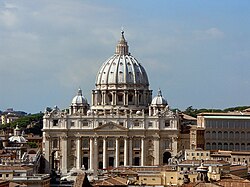 7.The Catholic Church, also known as the Roman Catholic Church, is the largest Christian Church, with more than 1.29 billion members worldwide. As one of the oldest religious institutions in the world, it has played a prominent role in the history and development of Western civilisation.Headed by the Bishop of Rome, known as the Pope, the church's doctrines are summarised in the Nicene Creed. Its central administration, the Holy See, is in the Vatican City, enclaved within Rome, Italy.
7.The Catholic Church, also known as the Roman Catholic Church, is the largest Christian Church, with more than 1.29 billion members worldwide. As one of the oldest religious institutions in the world, it has played a prominent role in the history and development of Western civilisation.Headed by the Bishop of Rome, known as the Pope, the church's doctrines are summarised in the Nicene Creed. Its central administration, the Holy See, is in the Vatican City, enclaved within Rome, Italy.The Catholic Church teaches that it is the one true church founded by Jesus Christ,that its bishops are the successors of Christ's apostles, and that the Pope is the successor to Saint Peter. The Catholic Church maintains that the doctrine on faith and morals that it declares as definitive is infallible.The Latin Church and Eastern Catholic Churches, as well as institutes such as mendicant orders and enclosed monastic orders, reflect a variety of theological and spiritual emphases in the Church.
The Catholic Church is notable within Western Christianity for its sacred tradition and seven sacraments. The principal sacrament, the Eucharist, is celebrated liturgically in the Mass. The church teaches that through consecration by a priest the sacrificial bread and wine become the body and blood of Christ. The Catholic Church practises closed communion, with only baptised members in a state of grace ordinarily permitted to receive the Eucharist.
The Virgin Mary is venerated in the Catholic Church as Queen of Heaven and is honoured in numerous Marian devotions. The Catholic Church has defined four Marian dogmas: the Immaculate Conception, the dogma that Mary was conceived without original sin; her status as the Mother of God; her perpetual virginity; and her bodily assumption into Heaven at the end of her earthly life.
8.The Keys of The Kingdom
The biblical passage that makes reference to “The Keys of The Kingdom” is Matthew 16:19. Jesus had asked His disciples who people thought He was. After responding with several of the more popular opinions, Jesus aimed His question directly at His disciples. Peter, responding for the twelve, acknowledged Jesus as the Christ, the Son of the Living God. After this great confession, Jesus replied, “Blessed are you, Simon Bar-Jonah! For flesh and blood has not revealed this to you, but my Father who is in heaven. And I tell you, you are Peter, and on this rock I will build my church, and the gates of hell shall not prevail against it. I will give you the keys of the kingdom of heaven, and whatever you bind on earth shall be bound in heaven, and whatever you loose on earth shall be loosed in heaven” (Matthew 16:17—19).
Keys are used to lock or unlock doors. The specific doors Jesus has in mind in this passage are the doors to the Kingdom of Heaven. Jesus is laying the foundation of His church (Ephesians 2:20). The disciples will be the leaders of this new institution, and Jesus is giving them the authority to, as it were, open the doors to heaven and invite the world to enter. At this point it is important to understand how, biblically speaking, one enters the Kingdom of Heaven.
 Saint Francis Receiving the Stigmata is a panel painting in tempera by the Italian artist Giotto, painted around 1295–1300 and now in the Musée du Louvre in Paris. It shows an episode from the life of Saint Francis of Assisi, and is 314 cm high (to the top of the triangule) by 162 cm wide.
Saint Francis Receiving the Stigmata is a panel painting in tempera by the Italian artist Giotto, painted around 1295–1300 and now in the Musée du Louvre in Paris. It shows an episode from the life of Saint Francis of Assisi, and is 314 cm high (to the top of the triangule) by 162 cm wide.Description
The work has a rectangular shape in the lower part, ending with a triangular cusp, and has a golden background above which is St. Francis receiving the stigmata during his prayer on Mount Alverno from a flying Christ who appears him as a seraphim. The latter's wounds emit light rays which strike Francis' body. The scene was innovative as it abandoned the Byzantine tradition of inexpressive, frontal figures; the background is a mix of newer and old elements, the latter including the very generic mountains and the lack of proportions in the landscape elements. The chapels in the mount show the attempt to draw them according to geometrical perspective. Francis' face is characterized by a strong use of chiaroscuro.
The Holy Grail is a vessel that serves as an important motif in Arthurian literature. Different traditions describe it as a cup, dish or stone with miraculous powers that provide happiness, eternal youth or sustenance in infinite abundance.
A "grail", wondrous but not explicitly holy, first appears in Perceval, le Conte du Graal, an unfinished romance written by Chrétien de Troyes around 1190.Here, it is a processional salver used to serve at a feast. Chrétien's story attracted many continuators, translators and interpreters in the later 12th and early 13th centuries, including Wolfram von Eschenbach, who perceived the grail as a great precious stone that fell from the sky. In the late 12th century, Robert de Boron wrote in Joseph d'Arimathie that the Grail was Jesus's vessel from the Last Supper, which Joseph of Arimathea used to catch Christ's blood at the Crucifixion. Thereafter, the Holy Grail became interwoven with the legend of the Holy Chalice, the Last Supper cup, a theme continued in works such as the Vulgate Cycle, the Post-Vulgate Cycle, and Thomas Malory's Le Morte d'Arthur
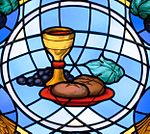 The Eucharist (also called Holy Communion, the Lord's Supper, among other names) is a Christian rite that is considered a sacrament in most churches and an ordinance in others. According to the New Testament, the rite was instituted by Jesus Christ during his Last Supper; giving his disciples bread and wine during the Passover meal, Jesus commanded his followers to "do this in memory of me" while referring to the bread as "my body" and the wine as "my blood".Through the Eucharistic celebration Christians remember Christ's sacrifice of himself on the cross.
The Eucharist (also called Holy Communion, the Lord's Supper, among other names) is a Christian rite that is considered a sacrament in most churches and an ordinance in others. According to the New Testament, the rite was instituted by Jesus Christ during his Last Supper; giving his disciples bread and wine during the Passover meal, Jesus commanded his followers to "do this in memory of me" while referring to the bread as "my body" and the wine as "my blood".Through the Eucharistic celebration Christians remember Christ's sacrifice of himself on the cross.The elements of the Eucharist, bread (leavened or unleavened) and wine (or grape juice), are consecrated on an altar (or table) and consumed thereafter. Communicants (that is, those who consume the elements) may speak of "receiving the Eucharist", as well as "celebrating the Eucharist".Christians generally recognize a special presence of Christ in this rite, though they differ about exactly how, where, and when Christ is present.While all agree that there is no perceptible change in the elements, Catholics believe that they actually become the body and blood of Christ (transubstantiation). Lutherans believe the true body and blood of Christ are really present "in, with, and under" the forms of the bread and wine (sacramental union). Reformed Christians believe in a real but purely spiritual presence of Christ in the Eucharist. Others, such as the Plymouth Brethren, take the act to be only a symbolic reenactment of the Last Supper.

